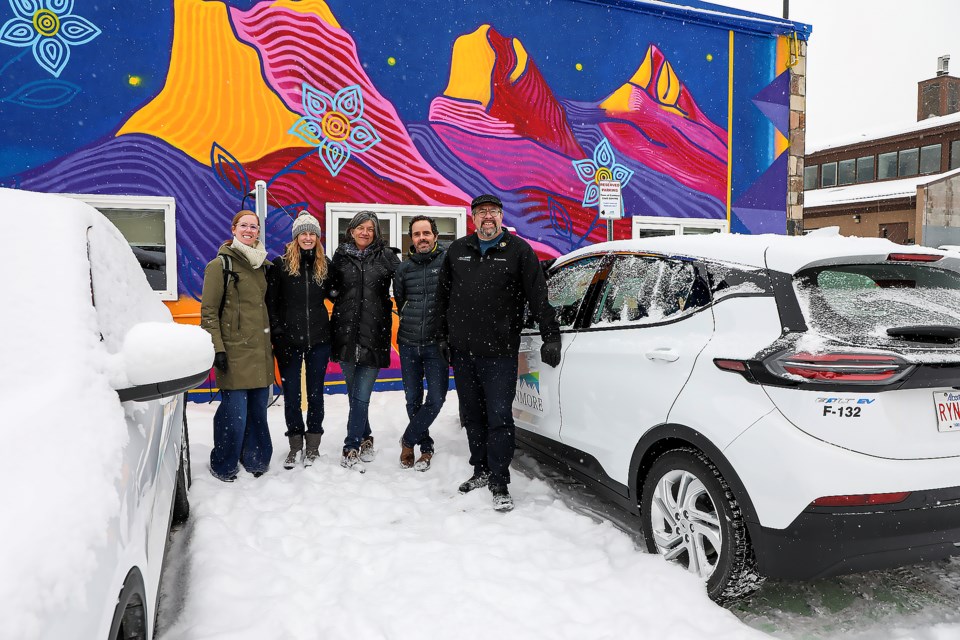CANMORE – A new inventory report of greenhouse gas emissions shows a double-digit decline in both the community and Town of Canmore-owned property.
However, while the information was positive given the municipality's climate action goals, the inventory report cautioned that much of it likely came because of reduced travel associated with the COVID-19 pandemic and the province of Alberta's coal power phase-out.
Amy Fournier, the Town’s energy and climate action coordinator, said a key aspect in continuing to see emission reductions is promoting Town-run programs and emphasizing the need for energy conservation and efficiency.
The key piece, though, will be when a new provincial building code is adopted, Fournier said.
“Part of with the building code is it’s a waiting game to see what the province does, and then we can see what’s potentially in our purview to support that despite or alongside what is adopted in the province,” she said.
The report showed from 2015-21, the Town’s greenhouse gas (GHG) declined by 25 per cent to 7,876 tonnes and the community had 221,594 tonnes of GHG use in 2021.
While the Town has made progress, the report highlighted municipal-owned property accounts for just four per cent of the community’s GHG.
The newly rolled out Clean Energy Improvement Program (CEIP) began at the beginning of November and allows homeowners to apply for financing loans and repay them through the property tax bill.
It takes about 10 days to get pre-approval for the program, and so far five people have been approved.
“I think there will be a big uptake once people get through that first pre-approval and I think we’ll start to see the approvals grow,” said Town CAO Sally Caudill.
When CEIP was approved, Town staff estimated between 14 and 18 people would apply each year, with an average loan of about $24,500 doled out.
“I’m hearing some positive things,” said Mayor Sean Krausert. “Some people hadn’t heard of it yet and were very happy when I told them it’s already come out and probably take some time through word of mouth. Hopefully, that will grow.”
Fournier said while CEIP isn’t the only solution, it ultimately adds up when factored in with other programs to promote energy conservation or efficiency.
“CEIP is one of those that on its own is not going to get us to our targets, but coupled with all of the other things we’re doing, it’s moving us there,” she said.
Meanwhile the number of electric or hybrid vehicles registered in Canmore is just under 300 compared to fewer than 100 in 2015. While there are about 12,000 vehicles registered in Canmore, meaning electric and hybrid account for 2.3 per cent, that type of vehicle registration is increasing at a faster percentage rate than newly registered vehicles in town.
The Town established its Climate Action Plan in 2018 that set goals to reduce community GHG emissions by 30 per cent of 2015 levels by 2030.
Under the plan, the Town would reduce its emissions by 50 per cent of its 2015 levels by 2030 in municipally-run buildings and equipment, while the community goal was 80 per cent below the 2015 levels.
The inventory includes municipally-owned buildings, street and traffic lighting, vehicle and equipment fleet and water and wastewater treatment. The majority of the municipality’s emissions come from the wastewater treatment plant (32 per cent), Elevation Place (16 per cent) and the Canmore Recreation Centre (15 per cent).
Electricity is also the highest energy use at 63 per cent, with the remainder being natural gas, vehicle gas and diesel. It did, however, decline by 13 per cent in municipal facilities since 2015. The inventory noted one-third of the decrease was due to more than 2,900 solar panels.
The inventory stated solar panels led to electricity savings of about $23,000 and roughly $8,500 from providing solar energy elsewhere when it created more than the Town-owned facility could use.
An inventory report estimated that the community's natural gas and electricity costs were $38.5 million.
The community saw a 19 per cent reduction in GHG emissions since 2015, but the report attributed that to the COVID-19 pandemic impacting travel. The community’s carbon intensity declined by 28 per cent, while electricity use increased by four per cent in 2021 as the population grew between the 2016 and 2021 Statistics Canada census.
The report said the reduction in GHGs since 2015 was promising, but the decline isn’t expected to keep going at the same pace.
The report added the Town will implement initiatives from the Climate Action Plan as it allows, but updates to the Environmental Sustainability Action Plan, Climate Action Plan, Climate Change Adaptation and Resilience Plan are all needed to keep up-to-date with the most modern scientific research on climate change.
It suggested a carbon budget would be a key step in maintaining progress in reducing GHGs. The budget has a municipality or organization set the amount of GHG emissions allowed to be produced in a specific time frame.
Canmore council declared a state of climate emergency in 2019 that was intended to prioritize its climate action efforts and voice the seriousness of climate emergency.
The Town completes a greenhouse gas inventory as a requirement for its membership in the Global Covenant of Mayors for Climate and Energy, an organization with more than 10,000 cities and governments.
BY THE NUMBERS
ENERGY COSTS IN 2021
- Electricity: $1.417 million
- Natural gas: $335,000
- Vehicle gas and diesel: $199,000
TOTAL GHG’S
- Community: 221,594 tonnes
- Town of Canmore property: 7,876 tonnes
GHG’S ON TOWN PROPERTY
- Wastewater treatment plant: 32 per cent
- Elevation Place: 16 per cent
- Canmore Recreation Centre: 15 per cent
- Pump and lift stations: 14 per cent
- Other facilities: Nine per cent
- Fleet equipment: five per cent
- Streetlights: Four per cent
- Civic Centre: Three per cent
- Waste management centre: Two per cent




